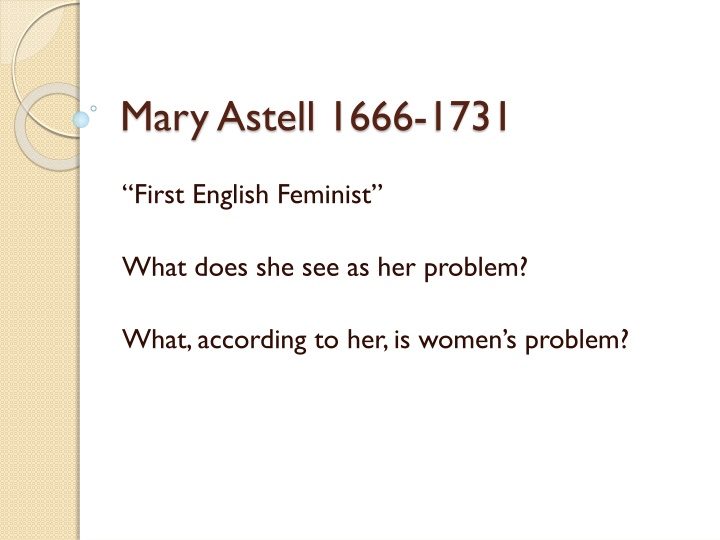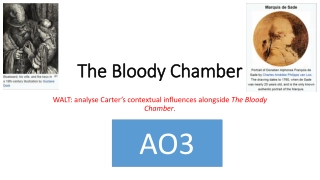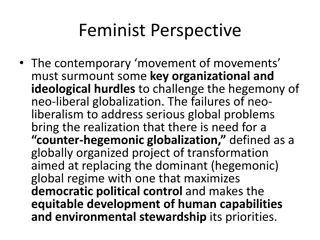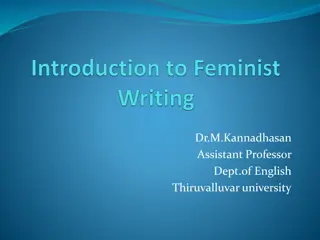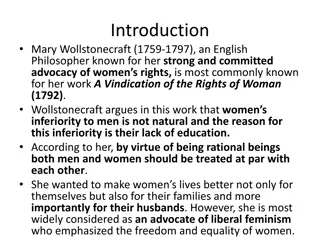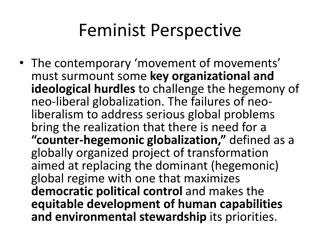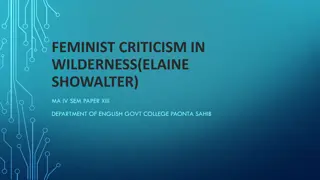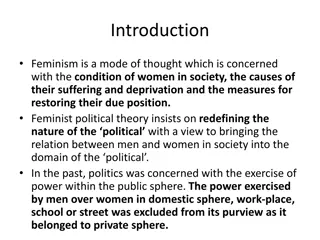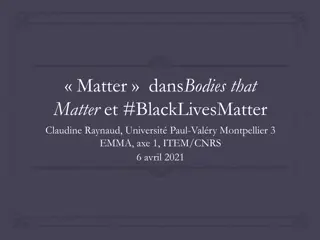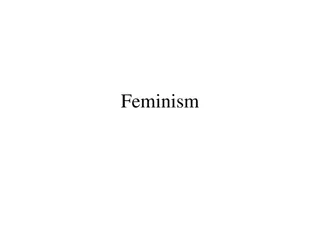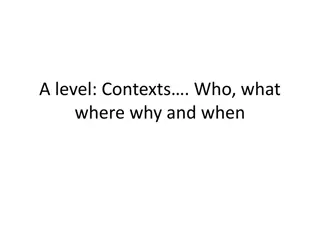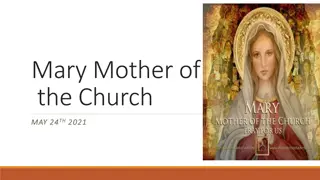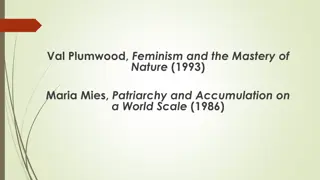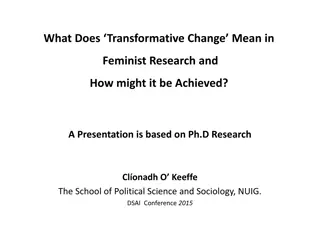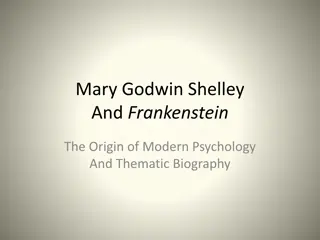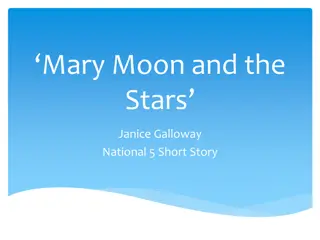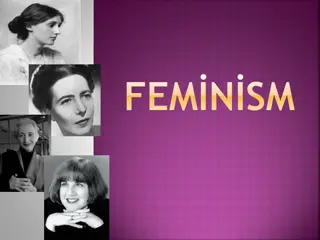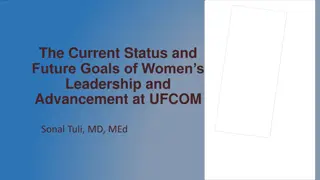Mary Astell - Early Feminist Addressing Women's Education
Mary Astell, a pioneering English feminist, identified women's education as a key solution to the inequality faced by women. She emphasized the necessity of education in rectifying societal misconceptions and empowering women to reach their full potential, proposing innovative ideas such as establishing a retreat for women to focus on education and self-improvement.
Download Presentation

Please find below an Image/Link to download the presentation.
The content on the website is provided AS IS for your information and personal use only. It may not be sold, licensed, or shared on other websites without obtaining consent from the author.If you encounter any issues during the download, it is possible that the publisher has removed the file from their server.
You are allowed to download the files provided on this website for personal or commercial use, subject to the condition that they are used lawfully. All files are the property of their respective owners.
The content on the website is provided AS IS for your information and personal use only. It may not be sold, licensed, or shared on other websites without obtaining consent from the author.
E N D
Presentation Transcript
Mary Astell 1666-1731 First English Feminist What does she see as her problem? What, according to her, is women s problem?
Some things Astell wrote [T]here is therefore no reason [women] should be content to be Cyphers in the World, useless at the best, and in a little time a burden and nuisance to all about them (59). 2
Education Why should education have been the context for early feminism? Because education is the remedy for the inequality of women What problem is Astell addressing? Keep thinking about this question and collect evidence. 3
What does Astell mean by education? The Cause therefore of the defects we labour under, is, if not wholly, yet at least in the first place, to be ascribed to the mistakes of our Education (59-60). Since ignorance is the problem it is Ignorance, either habitual or actual, which is the cause of all sin (61) education is necessarily the solution.
Metaphors to explain the necessity for a remedy Soil (60;62) Cultivation Foundation and root (70); foundations (71) What if minds are gardens? What about metaphors of disease?
Just what is the proposal (73-107) To erect a monastery (73) A religious retirement A retreat from the world The recreation of Paradise of Eden (74) that Women may no longer pass for those little useless and impertinent Animals (76) one great end of this institution, shall be to expel that cloud of Ignorance, which Custom has involv dus in . . . (77).
Astellscorrection: My design is not to expose, but to rectify your Failures (56). Asymmetry of cultural value for men and women: We value [men] too much and our selves too little, if we place any part of our worth in their Opinion (55) . The status of marriage: Her education proposal competes with a marriage proposal; women must have some career opportunity other than marriage. (See 62-3 for Proposals presented in a Golden Cup ). Women s self-estimate: How can you be content to be in the World like Tulips in a Garden, to make a fine shew and be good for nothing? (54)
Astells central task: to change womens minds: to break the enchanted Circle (55) Astell is a neo-Platonist. She uses words like "reflection"; "glass"; "shadows"; "substance"; "Reality" and "Appearance" (52, 64)to convey the necessity of changing women s minds so that they can perceive and aim for what is real, true, and good. The enchanted Circle (55): the glass and shadows of the world She also uses words indicating economic value-- "Profitable"' "real worth"; "Gain"; "Value"; "cheap"; "Money"; "purchase (51) to enable women to re-make or re- form their ideas of value.
Astell is ambitious for women . . . but not for worldly employments. I would have you live up to the dignity of your Nature (57). Hither, Ladies, I desire you wou d aspire tis a noble and becoming Ambition (57) I suppose then that you re fill d with a laudable Ambition . . . (122). Astell s language of ambition is part of her legacy to later women.
So what created the problem? Custom: " Ts Custom therefore, that Tyrant Custom, which is the grand motive to all those irrational choices which we daily see made in the world, so very contrary to our present interest and pleasure, as well as to our Future (67-8). How does the language of custom coincide with Astell s neo-Platonism? Discussion
Implications of Astells view of custom For Astell, not political tyranny but cultural tyranny is the greatest danger to women. The power of custom is so great that the educator must be aggressive in attacking contemporary values and habits. Examine Astell s language carefully. Her concern goes beyond the trivial world of fashionable pursuits with its concentration on appearance.
A spiritual and intellectual problem that is simultaneously an epistemological problem Part II is coming up. Astell explains why the problem she addresses is no small problem.
